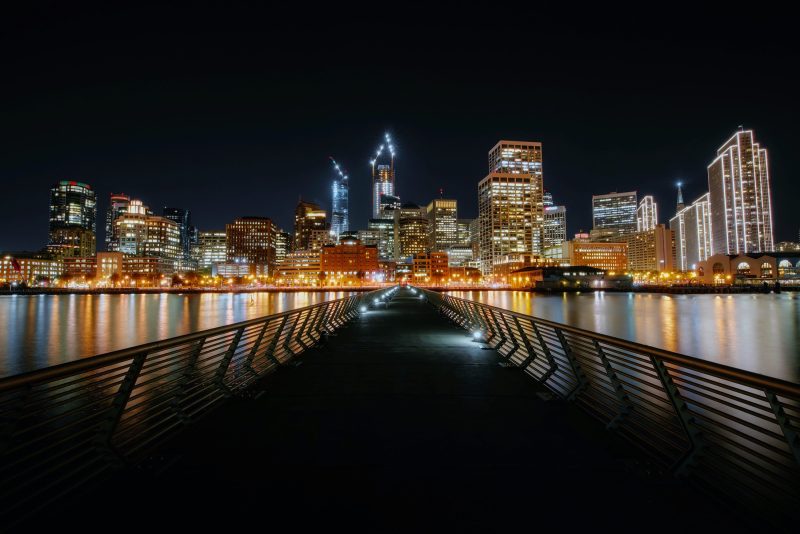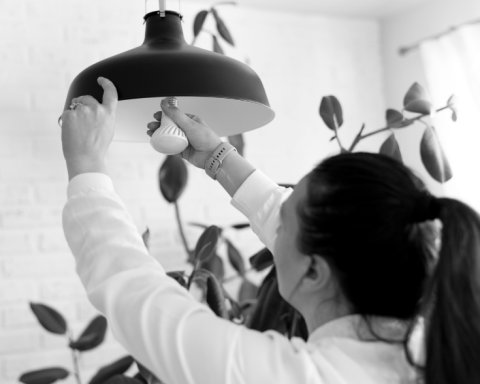Around the world, the usage of lighting is expanding for both indoor and outdoor uses due to socio-economic factors, such as rising population and economic development, that promote higher electrification.
In big cities, lighting is very crucial to illuminate various vital areas, from home to business, from neighborhood streets to giant billboards. However, there are always two sides to a coin.
As we shed light on this issue, let’s delve further into the state of global light pollution caused by artificial lighting and what it means to humans and the environment. To help reduce the negative impacts of light pollution, you can start contributing right from your home. From choosing proper light bulbs to decorating your interior space, we will help you to develop sustainable practices and habits that serve this purpose.
What is skyglow?
Unfortunately, the advancement of lighting systems has detrimental effects on the environment. The use of outdoor man-made, nighttime lighting can cause a light pollution effect called skyglow, which illuminates the cities where a large amount of outdoor lighting is installed as well as areas around them.
Studies have shown that skyglow can be intensified by air pollution and is particularly sensitive to very minute airborne particles. Moreover, ice and snow also exacerbate skyglow because they reflect more light than darker ground covers. This increases the perceived artificial light outputs from cities during the night.
Over time, global light pollution resulting from the growing usage of artificial outdoor lighting has increased by at least 49% from 1992 to 2017. In 2016, scientists revealed that light pollution affects 80% of the global population, with Singapore, Kuwait, and Qatar as the brightest, most light-polluted cities. With the ongoing socio-economic development targeting areas with inadequate lighting supplies, this number may continue to rise.
Effects of skyglow
Skyglow certainly gives negative impacts on the entire ecosystem and especially on human well-being. Studies stressed that skyglow can modify animal time division patterns, the loss of crucial nighttime navigation signals for species, and modifications to predator-prey interactions.
Not only animals but skyglow also affects humans — the loss of human cultural experiences connected to naturally lit night skies and considered profound by some, as well as challenges with the placement and use of astronomical telescopes.
Additionally, constant exposure to artificial light potentially disturbs a person’s day-night cycle and influences the way people produce the melatonin hormone, which naturally supplies antioxidant properties to the body. Without this hormone, there will be an increase in the risk of obesity, depression, sleep disturbances, diabetes, and breast cancer.
So, what can you do to reduce skyglow starting from your own living space? Below are five easy recommendations you can apply at home.
Use warm-colored LEDs or CFLs
LED (Light-emitting Diodes) and CFL (Compact Fluorescent Lamp) lights are known as the most energy-saving products among other lighting types. LEDs provide between two and five times as much light as incandescent bulbs for the same level of energy usage due to their energy efficiency. Whereas CFLs bring the same light but have a longer life span compared to incandescent light.
You need to be careful of choosing LED lighting as white LEDs could have a more significant negative influence on the environment. So you can opt for warmer color temperatures of a white LED, such as warm white or natural white instead of cold white, as research shows that the environmental effects of using white LED lighting would be reduced by using warmer-colored versions of it. Additionally, instead of focusing on the watts, think about the lumens, which measure how much light is produced.
According to the Australian Energy Rating, CFLs come in a variety of colors, including one that is quite similar to the 2700-degree Kelvin “warm” light produced by the majority of incandescent bulbs. The Kelvin temperature describes the hue of the light produced by the bulbs, it also serves as a comparison to outdoor natural light. In this case, CFLs are typically available in 5 colors:
- Warm white which is akin to incandescent light bulbs (2700-3000 degrees Kelvin);
- White (3500 degrees Kelvin);
- Cold white (4000 degrees Kelvin);
- Neutral white (5000 degrees Kelvin);
- And daylight (6000 degrees Kelvin)
It is important to note that, similar to other fluorescent lamps, CFLs contain mercury, which means you need to be careful when disposing of and replacing your old CFL bulbs. The recommended practice is to recycle them to prevent the mercury from escaping into the environment. Check for your local recycling organization or retailers that collect hazardous waste and provide recycling services.
Make it a habit to turn the lights off when not in use
Although outdoor lighting significantly drives skyglow, indoor lighting also has the potential to contribute to light pollution. For this reason, artificial lighting should only be used when strictly necessary and should only be left on for as long as only necessary.
You might need to have the desk lamp on while you are working or studying in the home office, but make sure to turn it off right away once you are done and leave the room. Similarly, it is alright to have the veranda or balcony lights on at night, but it does not have to stay on all night. You can turn them off before going to bed to save energy and reduce the chance of producing light pollution from your home environment.
In doing so, the average illumination levels can be decreased and more energy can be saved by using dimmers, motion sensors, and timers. These smart devices will help you to automatically manage the use of lighting and even the color emitted by the lights. Therefore, you do not have to worry about forgetting when to turn on and turn off the lights, which is very helpful to minimize the chance of unnecessary lighting usage.
Install light shields and turn the lights downwards
Lights that extend beyond the precise location that is supposed to be lit often end up as wasted light. In this case, light pollution can be avoided by using outdoor lighting fixtures that cover the light source to reduce glare and light trespass. By aiming the light downward and directly at the target area, the shields enable you to considerably eliminate skyglow.
For any installations of outdoor lighting, The International Dark Sky Association recommends using fully shielded or fully cut-off fixtures for outdoor areas. However, you may also consider having these fixtures installed around the indoor area to make sure that there will not be any light spillage escaping through the window.
Make your interior work harder to control lights
As a result of their ability to reflect light, highly polished, bright, or light-colored surfaces contribute more to the sky glow than darker, less reflective ones. You can lessen your contribution to light pollution by using darker paint or materials for outdoor elements. Avoid using white and vivid colors such as yellow. If you still wish to apply softer colors, going for earthy colors works well. In doing so, choosing a full matt (or flat matt) or satin paint rather than high-gloss paint can be a great step.
Another strategy to minimize reflections and control light using your interior elements is using pull-down shades or curtains for the windows on the opposite side of a bright wall. Consider tinted, UV, and infrared-coated glass when installing new windows.
For lighting artwork, utilize a shaded fixture with low wattage and a low angle of light coming from above.
Whilst for outdoor areas, installing an awning would be a great idea. A strategically positioned deciduous tree outside can have the same impact as well.
In conclusion
Preserving the environment is just as important as having a well-lit home. Adopt more eco-friendly practices in your daily habits, so you can contribute to the greater purpose which is to maintain a healthy and livable world for the next generations. As you read this article, look around the room; have you turned off unnecessary lights today?
If you would like to take your reading on indoor lighting further, visit the Home Organization Science Labs. The lab produces courses, certifications, videos, podcasts, and other learning materials using the research of the Institute for Life Management Science. Check out the Home Organization Science Labs today.
Photo by Pixabay on Pexels




